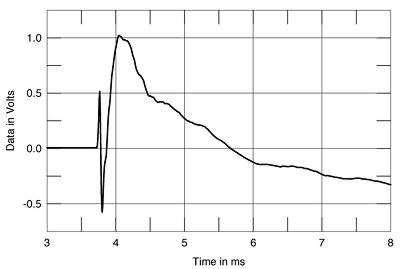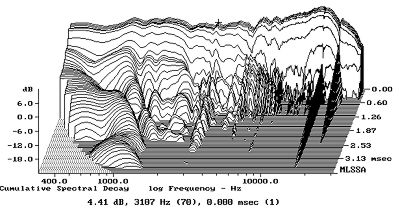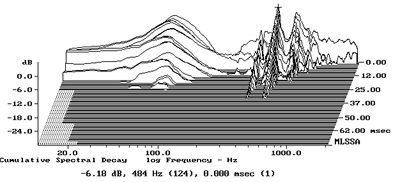| Columns Retired Columns & Blogs |
is it good choice for vocal and violin music?
i want to buy Cary 300 SEI for my ProAc 1sc
thanks.

Fig.6 ProAc Response One SC, step response on tweeter axis at 50" (5ms time window, 30kHz bandwidth).

Fig.7 ProAc Response One SC, cumulative spectral-decay plot at 50" (0.15ms risetime).
Calculating a similar waterfall plot from the output of a plastic-tape accelerometer fastened to the center of the ProAc's enclosure side wall (fig.8) reveals that the cabinet is well braced and rigid. The only significant mode that can be seen lies just below 500Hz, high enough in frequency for the resonance to be out of subjective harm's way.

Fig.8 ProAc Response One SC, cumulative spectral-decay plot of accelerometer output fastened to cabinet side. (MLS driving voltage to speaker, 7.55V; measurement bandwidth, 2kHz.)
Summing up, the measurements indicate that the tiny ProAc is a well-engineered gem of a speaker. I am not surprised that WP liked its sound as much as he did.—John Atkinson

is it good choice for vocal and violin music?
i want to buy Cary 300 SEI for my ProAc 1sc
thanks.